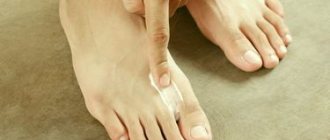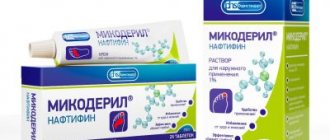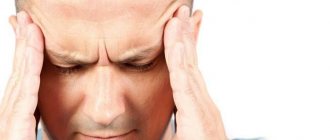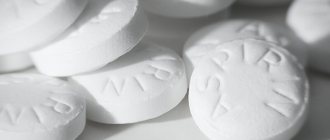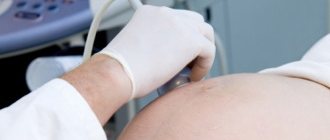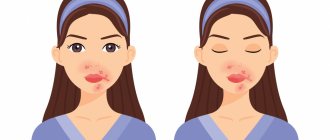Nails are not only a decoration for a person's hands, but, above all, they have a protective function for the fingertips and they also facilitate precise handling. Unfortunately, nails are often affected by numerous diseases.
Nail diseases - types
Many nail diseases are the result of poor nutrition, low in vitamins and minerals. Split nails usually indicate a lack of calcium and zinc.
Their excessive fragility is due to a lack of vitamins of the silicon, magnesium, iron and B group. White spots on the nails should lead to replenishment of calcium deficiency, and longitudinal grooves – deficiency of iron, as well as vitamins A and D.
The nail plate is also weakened by contact with detergents and certain diseases, including diabetes and thyroid disease.
Laboratory research
- Nail plate screening is a study during which the content of micro- and macroelements is determined. The goal is to see the level of vital substances: iron, potassium, calcium, magnesium, zinc, copper, sodium, selenium and others. And also determine the presence of toxic elements: barium, beryllium and aluminum, cadmium, arsenic, mercury, lead.
- Test for the presence of fungus. A piece of the plate itself and the subungual contents are examined under a microscope.
- Sowing. The material affected by the fungus is placed in a nutrient medium to grow colonies of fungi. In this way, the type of fungi and their resistance to drugs are determined. The process takes three weeks to a month.
Nail diseases - symptoms
Symptoms of nail disease are visible to the naked eye. Therefore, they should pay special attention to:
- nail color - white, yellow, green, gray, brown can be a symptom of the disease;
- the shape of the nails - scapular, gonadal, tubular - is incompatible with the natural growth of the nail;
- nail structure - longitudinal grooves and transverse grooves should attract attention;
- general condition of nails – brittle, peeling;
- condition of the skin around the nails - redness, swelling, bumps.
Nail diseases - treatment
If you notice any symptoms, you should consult a dermatologist. It is necessary to find the cause of the change and exclude serious diseases, such as: thyroid disease, syphilis, anemia, lack of micro and macro elements. Treatment depends on the type and severity of the disease. Some of them are treated with topical medications. In more severe cases, surgery may be required. Therapy is selected individually, taking into account the needs of the patient.
Unfortunately, nail diseases are quite common. Most often, they affect women who use cosmetic procedures in salons where hygienic conditions are not properly maintained.
The most common nail diseases
Nail candidiasis is a fungal disease of the nails that causes severe blackening, perigungual swelling and pain. Treatment is based on antifungal drugs.
Nail psoriasis occurs in combination with skin psoriasis and is an important part of the diagnosis of this disease. The nails become thickened, brittle, and have numerous transverse grooves and pinpoint cavities. In advanced forms of the disease, extensive onycholysis may develop.
Leukonychia is the so-called nail vitiligo, which appears as white spots. It is not a disease in itself, but can be a symptom of infection, ringworm, zinc and protein deficiencies, and kidney or heart failure.
Onycholysis is the separation of the stratum corneum from the finger. It appears gradually, starting from the edge of the nail. The nail becomes distorted and changes color to white, yellowish and even greenish. The causes of this disease can be mechanical damage, improperly performed care procedures, bacterial and fungal infections, harmful effects of chemicals, psoriasis or thyroid hormone disorders.
You can protect yourself from these diseases by following hygiene rules and choosing sterile beauty salons equipped with professional disinfection equipment.
State Budgetary Institution of Health Care of Sevastopol “Dermatovenerologic Dispensary”
Human fungal diseases, or mycoses, are infectious diseases of the skin, nails, hair, and mucous membranes caused by pathogenic fungi. They affect about 10% of the population, and according to some data – 2–3 times more. The incidence has more than doubled over the past 10 years. The growing prevalence of fungal infections is due to the fact that many people who become infected with nail fungus avoid treatment and do not go to the doctor.Onychomycosis is infection of the nail plates of the feet and hands by pathogenic fungi. This is an infectious disease transmitted from person to person. Onychomycosis almost never affects children. The incidence increases with age and is highest in older adults (peak at age 79 years). Men suffer from onychomycosis more often than women, with a difference of 1.3 times. Much more often than among the rest of the population, onychomycosis of the feet can be found in representatives of a number of professions: miners, factory workers, military personnel, athletes. The incidence of onychomycosis in these groups is up to 25-30%. Factors predisposing to infection are closed groups gathered in a limited area, shared showers and locker rooms, as well as boots or heavy boots. Onychomycosis of the hands is much less common (3-7 times) than on the feet. Onychomycosis on the hands is 3 times more common in women, as well as in cooks, confectioners, and others, canning factory workers who have to hold their hands in water for a long time or work with sugars.
The main causative agents of onychomycosis are anthropophilic fungi - dermatophytes . Predisposing factors for susceptibility to fungal nail infections are the elderly age of patients, severe illnesses and immunodeficiency conditions, nail injuries, diabetes mellitus, vascular diseases, obesity, etc.
“Is it possible to independently diagnose fungal nail disease? What are its manifestations? The appearance of the nails undoubtedly indicates the condition of the body. Healthy nails should be shiny, smooth and pink. With a fungal infection, they become dull, whitish, dirty gray or yellow, flake and crumble, thickening and deformation of the nail plates appear. Other symptoms of fungal infection: thickening, brittleness, change in shape, curvature, transverse striations, “eaten” edges of the nail, crumbling nail plates, thinning and separation of the nail from the nail bed, beak-shaped nail shape.
Most often, however, a fungal infection begins not with a change in the appearance of the nails, but with the appearance of cracks between the toes and on the soles. And only then the nails themselves are affected. A change in the appearance of the nail plates can be caused by other reasons: trophic disorders, bacterial rather than fungal infections, eczema...
“Does fungus cause physical pain?” Most fungal infections are not accompanied by pain. But there is a type of special yeast-like fungi that cause inflammation of the tissue around the nail and aching, itchy pain.
“Is it possible to apply artificial nails to nail plates affected by fungus? Is nail modeling harmful? False nails create the perfect conditions for fungal infections to thrive. So until complete recovery, do not think about any artificial nails. They can only be created on healthy natural nails and for a short time. Nails need to breathe. When extensions are applied, nails covered with a thick layer of special glue are “clogged.”
How can you become infected with a fungal disease? Infection can occur through household items: bath mats, washcloths, manicure accessories, clothes, shoes, when visiting a swimming pool, bathhouse, sauna, gym. Fungal diseases are easily transmitted from one person to another: a simple contact of the fungus with a damaged nail or skin is enough. They get sick at any age, including children.
If someone in the household suffers from a fungal disease, then the rest of the family members usually become infected as well. Fungal infections are spread through shared shoes, carpets, towels and many other household items. Only hygiene can help. You should: • never use someone else’s shoes and do not give your shoes to others, even close people; • a family member with a fungal infection should have their own scissors, nail files and other accessories; • avoid walking barefoot at home; • if possible, disinfect all objects that the patient’s legs and arms came into contact with. Remember that most often a fungal infection begins not with a change in the appearance of the nails, but with the appearance of cracks or peeling between the toes and on the soles. And only then the nails themselves are affected. So you should sound the alarm at the first skin signs of fungus. A fungal infection on the skin can be treated much easier and faster.
Why is it necessary to treat fungal nail infections? * The disease can spread to healthy nails and skin. * Fungus can cause allergic reactions. * A person suffering from a fungal disease becomes a source of spread of fungal infection in the family and among others. * If you have fungal diseases of the skin and nails, you are not allowed to visit sports, recreational or resort facilities.
Family predisposition is a significant factor, but not the only one. Infection often occurs in public places: in baths and showers, gyms and locker rooms, in swimming pools and on beaches. Wherever there is a humid, warm environment, fungi live long and feel comfortable. Follow the basic rules: • you cannot walk barefoot in public areas; • after the pool you must take a shower; • never visit baths and swimming pools if your soles have cracks. By the way, a number of swimming pools and saunas have already introduced special means for treating feet; • after visiting public places, treat the skin of your feet with boric alcohol or some antifungal ointment, cream, gel or spray. Almost any antifungal agents or alcohol solutions of antiseptics are suitable for prevention; • do not wear rubber boots or uncomfortable shoes that rub your feet for a long time; • do not overuse synthetic socks or tights.
All of these conditions lead to sweating, which creates a microclimate favorable for the growth of fungi.
False nails create ideal conditions - a kind of incubator for fungal infections to flourish. So, when you remove the artificial nail plates, you may find your own ugly nails underneath. You can model your nails only on healthy natural plates and for a short time. Gel nails are less harmful, but also create a greenhouse effect.
Nowadays, there are many remedies and methods for treating onychomycosis, all of them are aimed at removing the etiological agent - a pathogenic fungus from the affected nails. Treatment of onychomycosis can be either local, when an antifungal drug is applied to the affected nail, or systemic, when the drug is prescribed orally.
Systemic therapy ensures that drugs penetrate the nails through the blood. A limitation of the use of systemic therapy is the risk of side effects associated with long-term, months-long use of drugs. Therefore, systemic therapy is not indicated for pregnant and nursing mothers, people with liver disease or drug allergies. Local therapy allows you to create very high concentrations of an antifungal drug on the surface of the nail. The main advantage of local therapy is the absence of side and toxic effects observed with the use of systemic drugs. The second advantage is the obviously wide spectrum of almost any local antimycotic, due to the fact that its concentration exceeds the concentration of systemic agents by 3-4 orders of magnitude. The disadvantage of local therapy is that when the drug is applied to the surface of the nail, it does not always reach the pathogen - a fungus located in the nail bed. To apply the drug to the infected nail bed in cases of hyperkeratosis, they resort to auxiliary means - keratolytics, removal of the nail plate, and cleaning of the nail bed. Currently, combination treatment of onychomycosis is most often used when local treatment is combined with systemic treatment, which will reduce the dosage and timing of the systemic drug, thereby reducing the risk of side effects.
This figure reflects the modern realities of treating onychomycosis. The percentages show which (approximately!) types of onychomycosis are more common today, and what treatment is required. As you can see, with this distribution according to the severity of the disease, external self-medication is only 10%.
Changes in nails similar to onychomycosis occur in various diseases. Not a single professional dermatologist, no matter how much experience he has, will undertake the treatment of onychomycosis without confirming the diagnosis in the laboratory, even with the most typical signs of fungus on the legs. This is a necessary condition for any infectious disease. The same applies to other nail diseases - even with the most atypical signs of fungus, research is necessary. It includes microscopy (take a piece of nail, dissolve it in alkali and study under a microscope) and bacterial culture.
Mycelium of a pathogenic fungus in culture.
Microscopy shows the presence of fungus in the nail, and culture determines its type, as well as sensitivity to antifungal agents, which allows you to choose a more effective drug for treatment.
Dermatology deals with the treatment of onychomycosis, since the treatment takes into account not only the properties of the infectious agent, but also the condition of the nails - and the latter often plays a major role. As with other diseases in dermatology, a lot depends on the experience of the attending physician. What treatment tactics should I choose? How to evaluate conflicting test data (for example, one test is negative and the other is positive)? How to choose antifungal agents? How to prescribe them without harming the patient’s body? How to reduce treatment time? How to monitor its effectiveness and safety? How to avoid relapse and reinfection? The doctor must answer all these questions, and such knowledge is not given immediately. In dermatology, there is no absolutely effective diagnostic method, much less an absolute and universal treatment method. There is only the correct selection of treatment and careful implementation of the treatment program. This requires several visits to the doctor and evaluation of the effectiveness of treatment. Contact your doctor as soon as possible. With each year of delay that you give to the fungus, you lengthen the required period of treatment and observation, add large doses of medications, and make nail treatment necessary. Don't make a very big mistake - don't take systemic medications on your own.
Non-fungal nail diseases.
Despite the fact that most nail changes turn out to be a fungus, the other nature of these changes should also be taken into account. Here we need to highlight, first of all, chronic nail injury, psoriasis and eczema. Changes in nails can occur with some common skin diseases, internal infectious diseases, damage to the nervous, endocrine, cardiovascular systems, various types of intoxication, as well as dystrophy. Finally, nail changes can be congenital. These changes in the nails look similar to a fungal infection, but they are not. Treatment with antifungal drugs for non-fungal nail diseases, of course, will not be successful. This is another reason to consult a dermatologist rather than try to treat yourself if there are any changes in your nails.
Nail changes (symptoms) are usually described in special terms. Here are some of them, and non-fungal diseases that can cause these changes. However, we repeat that the most common cause of any more or less long-term changes in the nail is a fungus.
| Common Causes | ||
| The nail becomes white, the nail plate becomes cloudy | Leukonychia | Psoriasis |
| The nail becomes white, separation of the nail plate from the nail bed | Pseudoleukonychia | Chronic injury. Psoriasis |
| The nail turns black | Melanonychia | Subungual hematoma. Nail tumors |
| The nail takes on a different color, such as yellow | Chromonychia | Yellow nail syndrome. Drug reactions |
| Thickening of the nail bed | Hyperkeratosis | Psoriasis. Lichen planus. Eczema. Chronic dermatitis. |
| Inflammation of the periungual fold | Paronychia | Bacterial infections. Simple contact dermatitis. Allergic contact dermatitis. |
Chronic nail injury is the most common condition mistaken for onychomycosis. Various congenital foot deformities, wearing tight shoes, and playing sports (primarily athletics and football) lead to frequent damage to the nail plate and its separation from the nail bed. Constant trauma to the nails of the hands can be caused by professional activities, often caused by contact with various chemicals. Diseases common in dermatology: psoriasis, eczema, contact dermatitis when nails are involved also often resemble a fungal disease. However, unlike other skin diseases, a typical fungal infection does not involve only the fingernails. This can be observed with a yeast infection (candidiasis) of the nails with inflammation of the periungual fold. Non-fungal diseases of the nails can be observed simultaneously with onychomycosis or precede it.
When are nail changes most likely not fungal? • When only the fingernails are changed • When changes in the nails appeared soon after birth • When all 20 nails began to change at the same time • When there are manifestations of another skin disease (psoriasis, etc.)
According to statistics, every second nail disease is fungal. That is, if your nails are changed, the chance of having nail fungus is 50%, regardless of any manifestations and factors. We advise you to contact a dermatologist and get an answer to this question.
Nail fungus will not go away on its own! Once it starts, a fungal infection will not go away until the fungus is destroyed. Fungi are very tenacious and can survive for months in fallen skin scales. What then can you expect from a fungus lurking in your nails? First, fungal cells enter the skin, attach, multiply and spread on it and then, under favorable conditions, penetrate into the nail on one side. Over time, the fungus affects all parts of the nail and spreads to other nails or skin. Nail fungus is a hotbed and source of infection for infecting other parts of the body. Even if all foci of fungus on the skin of the feet or torso are cured, re-infection will occur from the remaining source of infection in the nails.
Fungal nail diseases reduce the quality of life.
Research conducted by the National Academy of Mycology has shown that the presence of nail fungus or athlete's foot significantly reduces the quality of life - a set of indicators that characterize a person's emotional, mental and social well-being. For this purpose, several thousand patients were examined and answered a special questionnaire in 2001-2002. It turned out that the quality of life with fungal nail disease decreases to an average of 50–55% of the full value characteristic of a healthy person. At the same time, patients noted not only physical inconvenience associated with thickening or destruction of nails, but also experienced various experiences, fears, and negative emotions. It was found that nail fungus greatly limits a person’s activity, interfering with his rest, exercise, and communication with other people. Moreover, feelings of inconvenience and shame about the condition of one’s nails sometimes prevented timely consultation with a doctor. The longer the disease lasted, the more severe the nail fungus became, and the worse the quality of life became.
Health problems associated with nail fungus.
The first and main health problem caused by the presence of mycosis of the nails is the fungus itself - a chronic infectious disease that steadily destroys the nails and threatens to spread to the people around them, especially members of the patient’s family. However, doctors also identify other problems caused by nail fungus. Untreated onychomycosis and mycosis of the feet are considered as an entry point for other infectious diseases - for example, bacterial - erysipelas. Fungal infection of the nails significantly complicates the course of diabetes mellitus. Allergization of the human body with a fungal infection is possible - the formation of hypersensitivity to the fungus as an allergen, that is, fungal allergy. The development or worsening of diseases such as bronchial asthma, allergic dermatitis, various skin rashes and reactions is possible. In very rare, isolated cases, usually against the background of immunodeficiency, untreated nail fungus led to the development of deep mycosis - germination or penetration of the fungus with blood into the internal organs, which caused death. Fortunately, most modern patients with nail fungus do not experience such outcomes. But even if you completely exclude their possibility, you cannot leave fungal nail disease without treatment. How to treat scabies, pediculosis and other infectious diseases. If you suspect nail fungus, we advise you to consult a doctor as soon as possible.
In the diagnosis of onychomycosis, we use completely methods that are not available in most dermatological institutions: -High-precision PCR diagnostics; - Sowing with identification of any type of fungus; -High-quality KOH microscopy.
Accurate diagnosis eliminates the choice of the wrong antifungal drug and prevents the resistance of pathogenic fungi to it. The effectiveness of diagnosis allows you to start treatment as quickly as possible, without the need for repeated or multiple examinations.
Our treatment regimen for onychomycosis includes: 1. Assessment of the clinical characteristics of onychomycosis with calculation of the severity of nail damage and characteristics of their growth, 2. Prescription of antifungal drugs that precisely act on the type of fungus that causes your specific case of the disease, 3. Hardware treatment of nails, allowing immediate , safely and painlessly remove (sand) affected areas of nails containing fungus. 4. Mandatory observation after treatment and control of cure using accurate laboratory tests.
The most common toenail diseases
Onychomycosis is one of the most common toenail diseases, but it can also appear on the toenails. Fungi, or rather dermatophytes, thrive in the nail environment.
The infection usually occurs when using swimming pools or public showers. Mycosis manifests itself as a color change to yellow, brown or white. There is also deformation of the nail plate and onychlinosis. Treatment requires the administration of appropriate antifungal drugs. If treatment is unsuccessful, surgical removal of the nail may also be necessary.
In prevention, foot hygiene, thorough drying after each wash and cutting nails short are important. You cannot lend shoes, a towel or nail scissors to anyone.
An ingrown toenail is most often found on the largest toenail and is the result of improper care or shoes that are too tight. The cause may also be a nail disease, such as mycosis. Depending on the cause, a treatment method is established.
Etiology and pathogenesis of onychomycosis
Onychomycosis is caused by three main classes of fungi: dermatophytes, yeasts, and nondermatophytic molds.
Dermatophytes are the most common cause of the disease. Two main pathogens are responsible for 90% of all cases of onychomycosis: Trichophyton rubrum (70%) and Trichophyton mentagrophytes (20%). Onychomycosis, caused by non-dermatophytic mold fungi of the genera Fusarium and Aspergillus, as well as Scopulariopsis brevicaulis, is an anamorphic (asexual) representative of the genus Ascomycota, is gradually spreading throughout the world. Today they are responsible for 10% of cases of the disease. As for candidal onychomycosis, it is caused by Candida albicans and is quite rare.
In distal lateral subungual onychomycosis, Trichophyton rubrum is usually detected. Proximal subungual onychomycosis is typical in immunocompromised patients . The same type of onychomycosis, but with periungual inflammation, is caused by non-dermatophytic molds. White superficial onychomycosis of the nails is caused by Trichophyton mentagrophytes, and its deeper forms are caused by non-dermatophytic molds. Candida nail infection is often observed in premature infants, immunocompromised patients, and individuals with chronic mucosal candidiasis.
Risk factors for developing onychomycosis:
- family history;
- elderly age;
- warm and humid climate;
- weakened body;
- nail injury;
- regular fitness classes;
- immunosuppression (drug, HIV, etc.);
- visiting public swimming pools, baths and saunas;
- tight shoes.
Repeated microtrauma of the nails in tight and uncomfortable shoes provokes onycholysis (detachment of the nail from the soft tissues of the finger) and other degenerative conditions that contribute to the penetration of fungi into the nails.
Nail disease in children
Nail diseases in children are most often caused by infections. This leads not only to destruction of the nail plate, but also to the appearance of open wounds.
Warts are caused by HPV that enters the body through mechanical damage. Symptoms include red or grayish nodules. Most often they appear next to the nail, but it happens that the wart can be located under the nail plate. This causes pain and discomfort. Their treatment is very burdensome. Chemicals, laser therapy and eventually surgical methods are used.
Mycosis of the nails in children is also common. This is due to reduced immunity and frequent trips to the pool or sports club. It is necessary to ensure that the child only uses his own towel and always remembers hygiene. Treatment is long and burdensome, so prevention is better than cure.
Section: Articles Tags: dermatology
